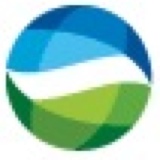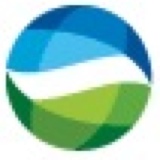Information
-
Tunneling Audit
-
Job Number & Location
-
Conducted on
-
Prepared by
-
Location
-
Personnel- List Field Supervisor, Operations Manager, Crew Members. List in this order
Housekeeping/Project Set up
-
Tool-box talk has been conducted (daily)
-
Office area neat and orderly, garbage cleaned up, etc.
-
Job site trailers cleaned, properly organized
-
Specific location for trash & debris and/or container(s) is available and utilized
-
Adequate supply of clean water and soap for washing (waterless soap acceptable)
-
Adequate supply of drinking water and cups (specific container for drinking water only)
-
OSHA Safety Board posted and safety signs in place
-
Employees provided with all safety and personal protective equipment
-
Eyewash station(s), bottles, or other designated source is on site readily available
-
All walk areas, shaft, and tunnel entrance, etc. clear of debris
Traffic & Vehicle Safety
-
Traffic control equipment, devices and barricades are appropriately set up
-
Employees exposed to traffic are wearing appropriate PPE (Reflective Road Vest, etc)
-
Vehicles have serviceable fire extinguisher mounted and warning triangles/flares
-
Clean serviceable first aid kit in each vehicle and applicable trailers
-
Vehicle pre-trip inspections are current and available
-
DOT log book filled out and required vehicles
-
Tags on on vehicles are up to date
-
All vehicles have up to date insurance cards and accident report forms
Electrical Safety
-
Electrical equipment is grounded as required, all three prong plugs are in condition (two plug prongs are prohibited)
-
110 V/120 V receptacles are ground fault (GFIC) protected and being utilized
-
Maintenance program on electrical cords in place & up to date (cords must be rated for hard, extra hard service or greater)
-
Electrical safety are in safe working order
-
Electrical boxes are properly labeled
-
Employees know where electrical boxes are
-
Employees are aware of overhead wires
-
Lighting systems are in place, grounded and working properly (adequate for night work)
PPE & Personnel Hazards
-
Emergency numbers are posted and crew members have the means to summon help in an emergency
-
Employees are wearing at least the minimum required PPE (steel toed boots, jeans, reflective vest, 3" sleeved t-shirt, hard hat)
-
Additional PPE being worn if needed (ear plugs, safety glasses)
-
Employees dressed appropriately (no shorts, baggy t shirts, loose jewelry, long pulled back)
-
Self-rescuers being used (employees trained in the use and care of unit)
-
Respirators being used (employees trained in use and care of units)
-
Subcontract employees are adhering to safety rules, training, and company policies
-
Employees have received safety training and orientation as required
-
Employees trained on operational procedures (job changes, equipment, etc)
Hazard Communication, Chemical, and Fuel Safety
-
Material Safety Data Sheet (MSDS) is readily available for all chemical on site
-
Employees trained and demonstrate proficiency with company hazard communication program
-
Employees aware of chemical/physical/exposure hazards, and protective measures
-
Gasoline and other flammable chemicals are in automatic closure containers with flame arrestor
-
Chemicals are stored in approved and labeled containers (HMIS and/or manufacturers labels are clearly legible)
-
Used oils, grease, and oily rags cleaned up and removed of properly
-
Fuel tank(s) properly marked, with fire extinguisher nearby
Fire Protection
-
Properly rated fire extinguisher in place
-
Shaft
-
Trailers
-
Vehicles
-
Equipment
-
Fuel Area
-
Fire extinguishers checked and recorded monthly
-
Employees trained on proper use and handling of extinguishers
Hand Tools, Misc. Tools
-
Chains saws properly guarded
-
Grinders properly guarded (hand grinder, bench grinder, etc)
-
Employees trained on proper use
-
Whip checks on all pressured air connections (water, air, etc)
Confined Space
-
Appropriate work permits are in use and at entry point (entry, hot work, etc)
-
Permits are being filled out correctly and being completed all the way
-
Qualified attendant is present during entry
-
Attendant is properly trained in rescue procedures and know the number of entrants below ground
-
Entrants are aware of hazard prior to entry and are using necessary PPE
-
Gas detectors have been calibrated on 30 day interval and have calibration sticker on front and are in use
-
Necessary fall protection and retrieval systems are in place and being used
-
Adequate mechanical ventilation is in place and being used
-
Brass Tag Board is in place and being used
-
Adequate number of self rescuers are available (one for each employee) and are within reasonable reach of work area
Cranes- RO & Hoisting Equipment
-
Daily log being kept by operator
-
Positive lock on headache ball
-
Spring latch
-
Anti-two block system in place and working properly
-
Landing for operator
-
Crane certified and documented (annually by outside source)
-
Chain slings certified with proper tags
-
Cable slings inspected and recorded
-
Crane swings radius roped off
-
Adequate hoisting capability for emergencies
Mancages & Work Platforms
-
Mancage(s) have been inspected and certified (annually by outside source)
-
Documented meeting with all employees using the mancage
-
Mancage posted with proper signs
-
Weight
-
Capacity
-
Keep door closed
-
Cables and lifting bridle inspected daily
-
Safety railing in place and inside cage
-
Positive latch on crane, headache ball
-
Mancage inspected daily and recorded
Tunnel
-
Communication system is in place and working (at least two forms)
-
Head sets being used
-
Tunnel lights
-
Temporary lights
-
Lighting systems being used
-
MSHA approved camp lamp
-
Lighting systems grounded
-
Light bulbs rough service, shielded, and have protective guards
-
Lights 100v/120v ground fault protection
-
Eye walk station located nearby
-
Hand washing available
-
Drinking water available and clearly marked drinking water
-
Employees aware of Emergency Action Plan (EAP) in case of evacuation
Tunnel Boring Machine (TBM)
-
Gas detector on machine working properly, recorded, and calibrated monthly
-
Bell and light signals on conveyer working properly
-
Employees know where emergency stop button is located
-
Emergency stop button working properly
-
Conveyer has emergency stop and working properly
-
Adequately stocked first aid kit
-
Necessary areas have fire extinguishers (operator, transformer, tail pulley, etc)
Access & Egress
-
Access and egress protected and clear of debris
-
Ladders and landings are safe and secure
-
Entrance to ladders guarded
Check in/Check out & Safety Instructions
-
Entry permit posted at entry point & filled out correctly
-
Designated person know the number of entrants in the tunnel/sewer line
-
First aid equipment in place
-
First aid kit have adequate supplies
-
Emergency Action Plan (EAP) on site
-
Location/numbers of rescue teams on site
-
Job location on site with plans available for review
-
Emergency numbers posted and employees are aware of their location
-
Hot work/ burn permits being filled out (required anytime cutting, welding, or grinding below ground)
Ventilation
-
System in place and in working order
-
Ventilation adequate for number of employees & equipment (200 com per person, 100 cfm per hp, 30 LMF velocity)
-
Anemometer readings taken each shift and recorded
-
Air test taken each shift and recorded
-
Silencer needed on ventilation system
Air Monitors
-
Proper number of monitors on site
-
Monitors calibrated every 30 days and have calibration sticker on front
-
Monitors are working properly
-
Records being kept on unit (calibration, repairs, batteries)
-
CSE spotters being used (calibrated, recorded, and working properly)
-
Employees trained for proper usage of air monitoring equipment
-
Air monitors cleaned and put on charge after each shift
-
Tunnel rescue trailer on site
-
Breathing apparatus inspected monthly
-
Air tanks fill to requirement (3135 PSI BG-174A, 3000 PSI BioPak-240)
-
Equipment in place and kept up to date and stocked
-
Camp lamps charged and ready
-
Generator started monthly and working
-
Monthly meeting held with Tunnel Rescue Team
Locomotive/Train
-
Lights working
-
Brakes working
-
Bell, horn, etc. working
-
Air purifier on unit
-
Fire extinguisher
-
Operator properly trained on how to operate unti
-
Unit(s) checked daily (each shift)
-
Operator(s) checking muck box hookup s
Welding & Cutting
-
Gas cylinders separated by 20 feet, capped, and secure
-
Gauges in good working order/ both covers in place
-
Welding leads checked and repaired as needed
-
Welding hoods in good condition with welding headband in place
-
Trailers clean of debris with fire extinguishers in place
-
Burn permits issued for below ground work
-
Gauges removed after use
-
Welders operating properly with ground fault protection
Trench & Excavation
-
Competent person on site
-
Daily inspection of excavation by competent person
-
Personnel properly trained
-
Properly shored or sloped or trench box
-
Employees protected from cave-ins & loose rock/soil that could roll into the excavation
-
Spoils, materials & equipment set back at least 2 feet from the edge of the excavation
-
Engineering designs for sheeting and/or manufacturing data on trench box capabilities on site
-
Utility company contacted and given 24 hours notice and/or utilities already located and marked
-
Overhead lines located, noted, and reviewed with the operator
-
Precautions taken to protect employees from water accumulation
-
Surface water runoff diverted/controlled to prevent accumulation in the excavation
-
Air in excavation tested for oxygen deficiency, combustibles, other contaminants
-
Exit (i.e. ladder, slopped wall) no further than 25 feet from any employee
-
Ladders secured and extended 3 feet above the edge of the trench
-
Employees protected from cave ins when entering and exiting the excavation
Signature
By signing you are acknowledging that you have read and will make efforts to correct safety violations and hazards.
-
Foreman
-
Superintendent
-
Safety Manager







